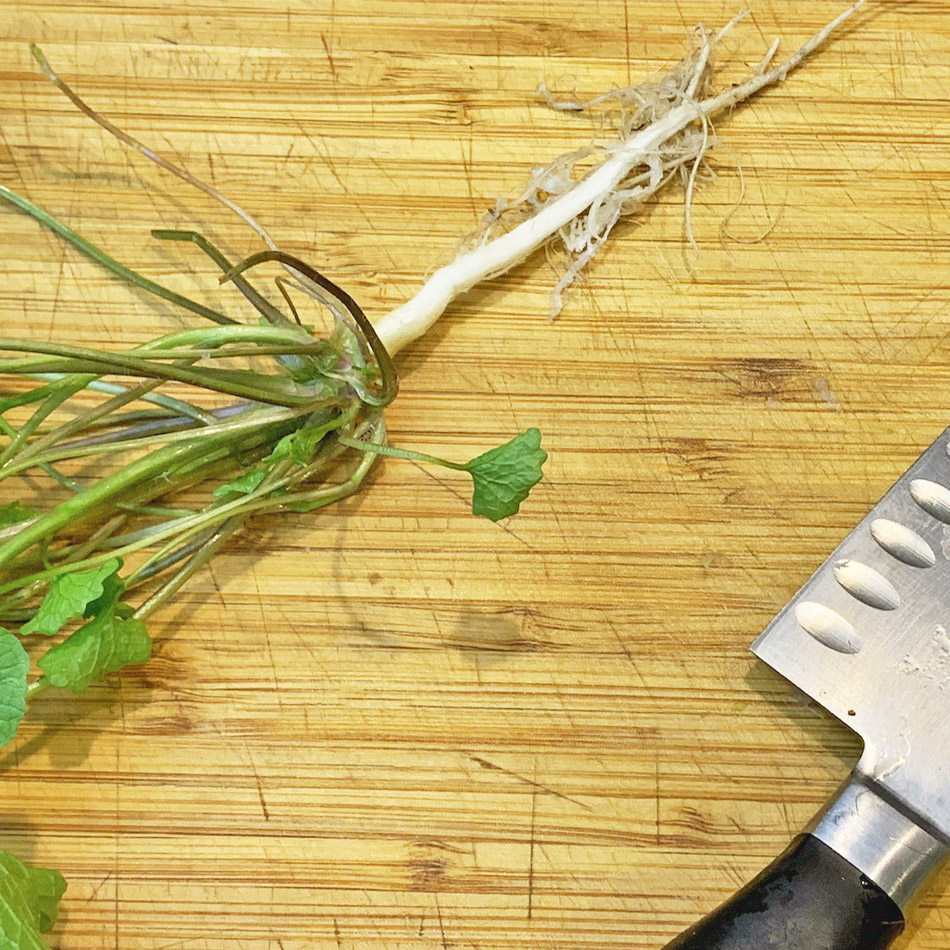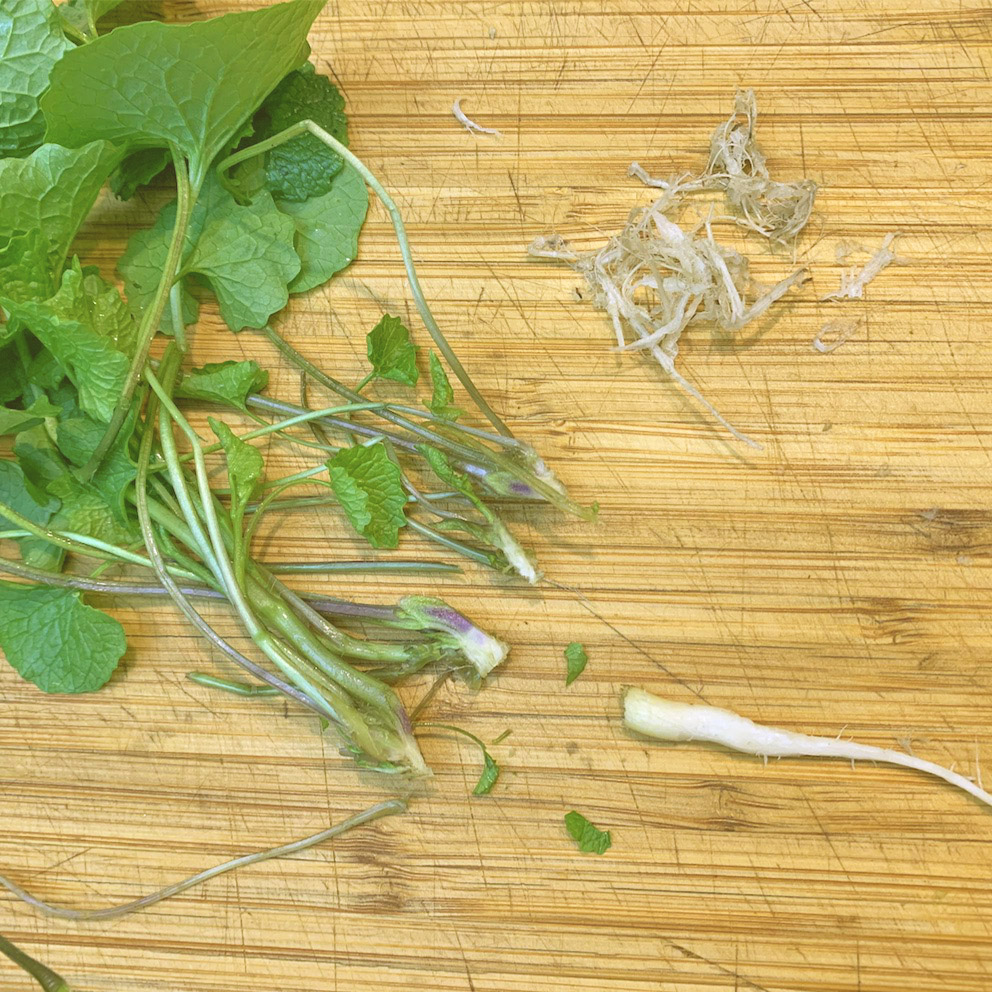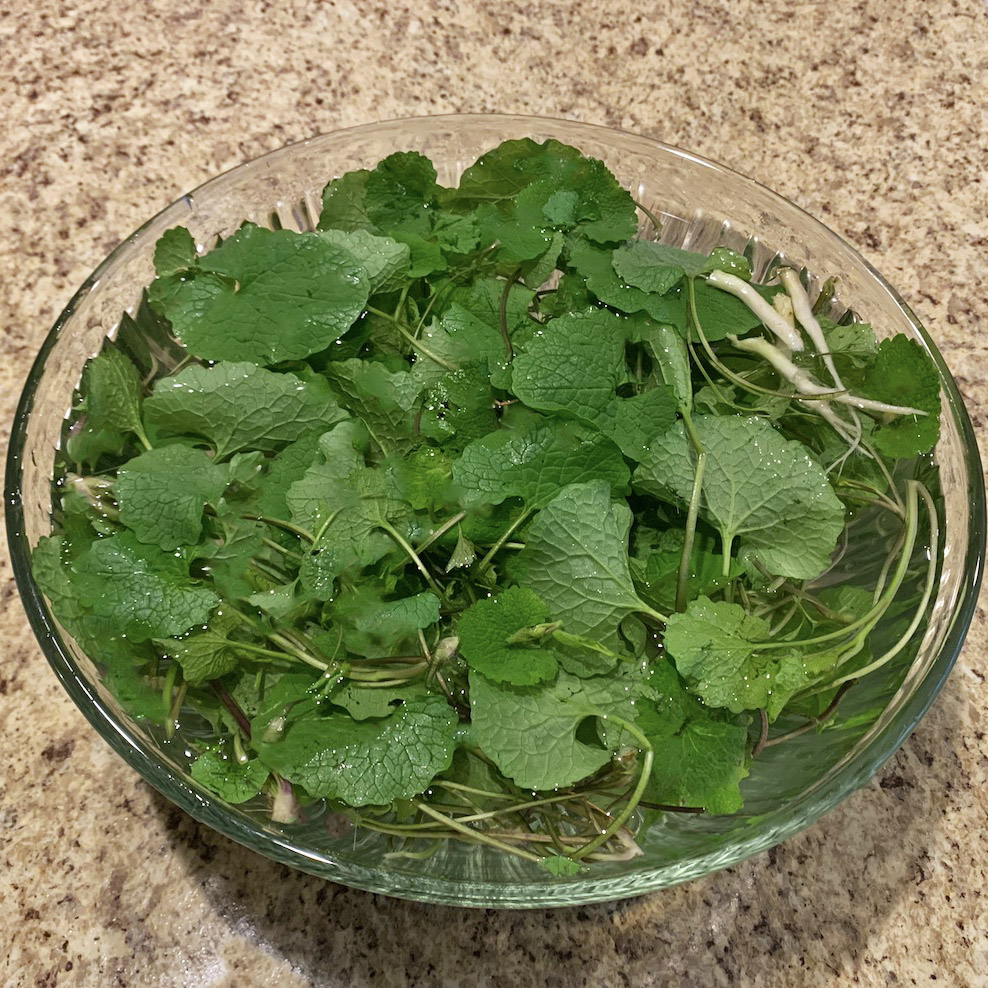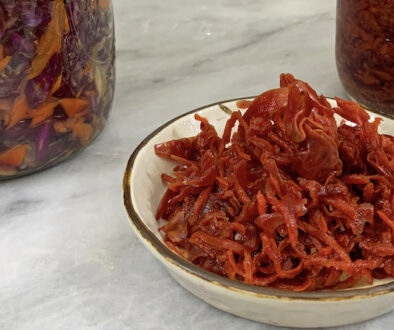Basic Garlic Mustard
Along with dandelions, garlic mustard is one of the most plentiful (wild and free) greens and among the easiest to harvest.This plant is a highly nutritious, delicious and abundant food source.
Alliaria petiolata (garlic mustard or Jack by the Hedge) is an invasive species brought here from Europe for food and medicinal purposes. In early times it was used medicinally to treat gangrene and ulcers. It is also known to have used as a diuretic.
Garlic mustard is said to contain vitamins A,C,E and some Bs. This plants’ minerals include potassium, calcium, magnesium, selenium, copper, iron, sulfur and manganese. It also contains antioxidants and has omega 3 fatty acids.
Garlic mustard also contains traces of cyanide like broccoli, cabbage and broccoli rabe. Cyanide is water soluble which is why this basic recipe includes soaking and blanching.
Spring is the best time to harvest this plant. As the heat and sun increase in the summer, the leaves get more bitter. Garlic mustard that grows in the shade is also less bitter.
Harvest the whole plant including the roots ( to help control the invasive).
There are some similar looking wild plants so please be sure of your identification before harvesting. Crushing a leaf will give you a light garlic aroma.
Do not harvest near a road side, dog walk or where poison ivy grows.
It can be eaten raw, cooked or pickled.
You can use garlic mustard in pestos, salsas, vegetable dishes, soups, stir fry and much more. It has an appealing flavor of mild garlic with a slight bitter taste. The roots (which taste like mild horseradish), flowers and seeds can all be eaten.
Garlic Mustard is so versatile and really delicious.
In this dish I have used the roots minced like garlic.
This basic recipe utilizes garlic mustard as a leafy green side dish.
Divine!
Basic Garlic Mustard
Prep and cook time 25 minutes
Serves 2 (or more)
Makes 1 delicious cup
Ingredients:
3 cups garlic mustard (whole plants including roots)
a dash of olive oil (or grapeseed)-1/2 tsp.
a pinch of sea salt – 1/32 tsp.
a splash of apple cider vinegar -1/2 tsp.
Recipe:
Bring freshly harvested plants inside and clean in sink.
Remove any pine needles, etc.
Submerge in a bowl of cool water, swish and rinse under running water to remove any soil.
Drain and prep on cutting board 1 plant at a time. Gently holding the greens as leverage, take your sharp knife and carefully scrape down the roots to remove any hairy parts or soil.
Cut greens from cleaned root.
Cut the base where the greens hold together into a few parts. Give this part an extra rinse in case any dirt was hiding in there.
Put cleaned greens and roots in a large bowl of clean water as you work on the next.
Let everything soak as you get the next step ready.
Put a pot with a few inches of water on to boil. (I use my sauté pan and then pour water out after and reuse to sauté.)
Drain the garlic mustard and separate out the little roots.
Mince roots and keep them separate.
Chop the greens; I like to cut the bottom of the stems smaller and leave the leafy part bigger.
When water boils add garlic mustard stems and leaves. Cook for 60 seconds and remove to a colander to drain.
Pour out water, rinse pan and return to stove.
Warm oil and sauté minced roots for about a minute, like garlic, on medium heat. Add a pinch of sea salt and stir. Add the blanched stems and leaves with a slash of vinegar. Stir and cook for a few minutes until garlic mustards are bright green and tender.
Serve and enjoy.











